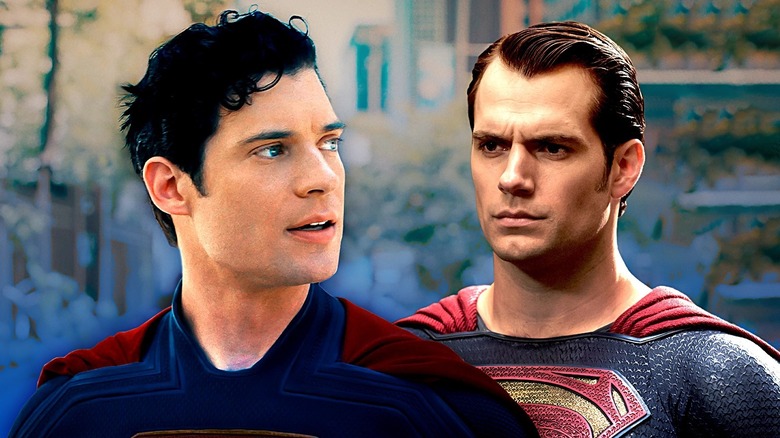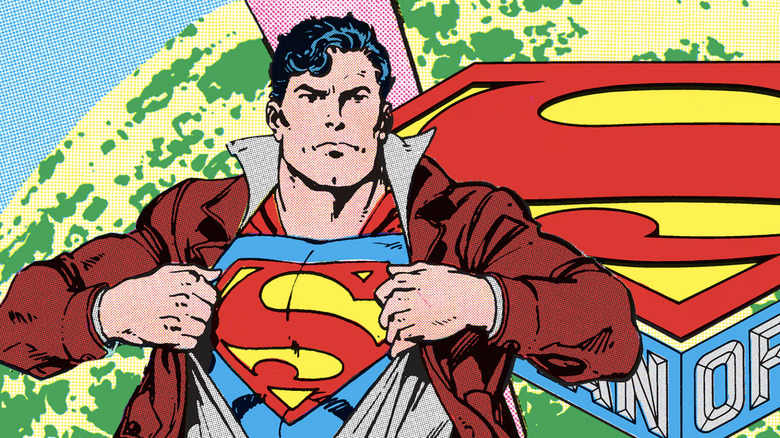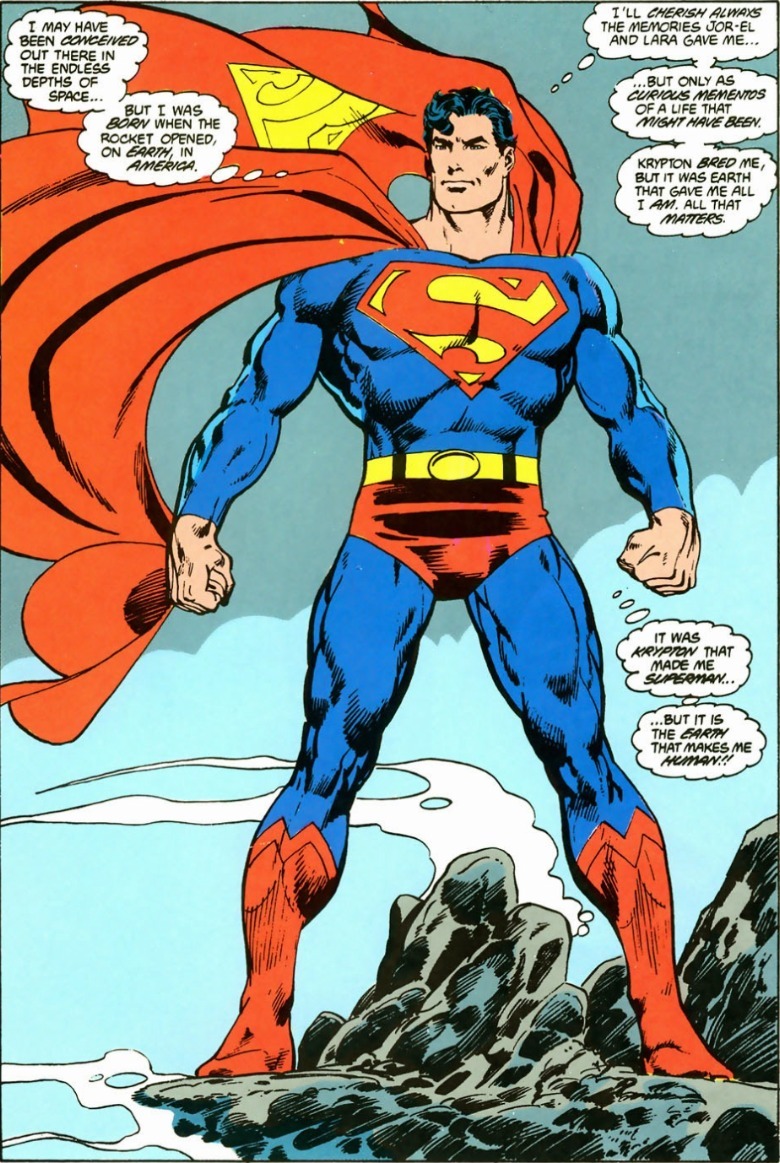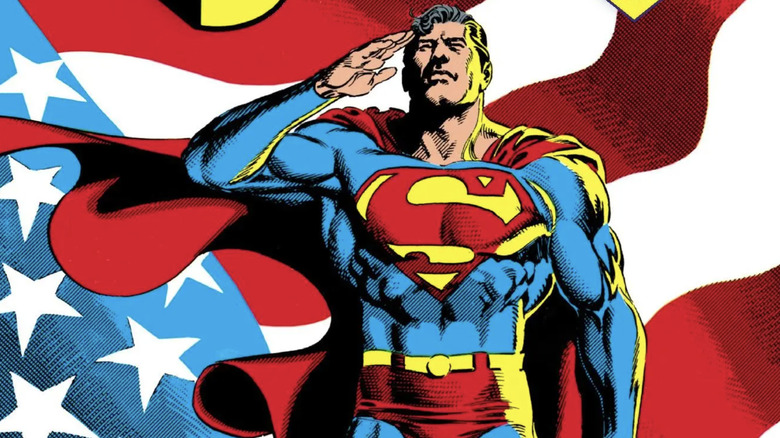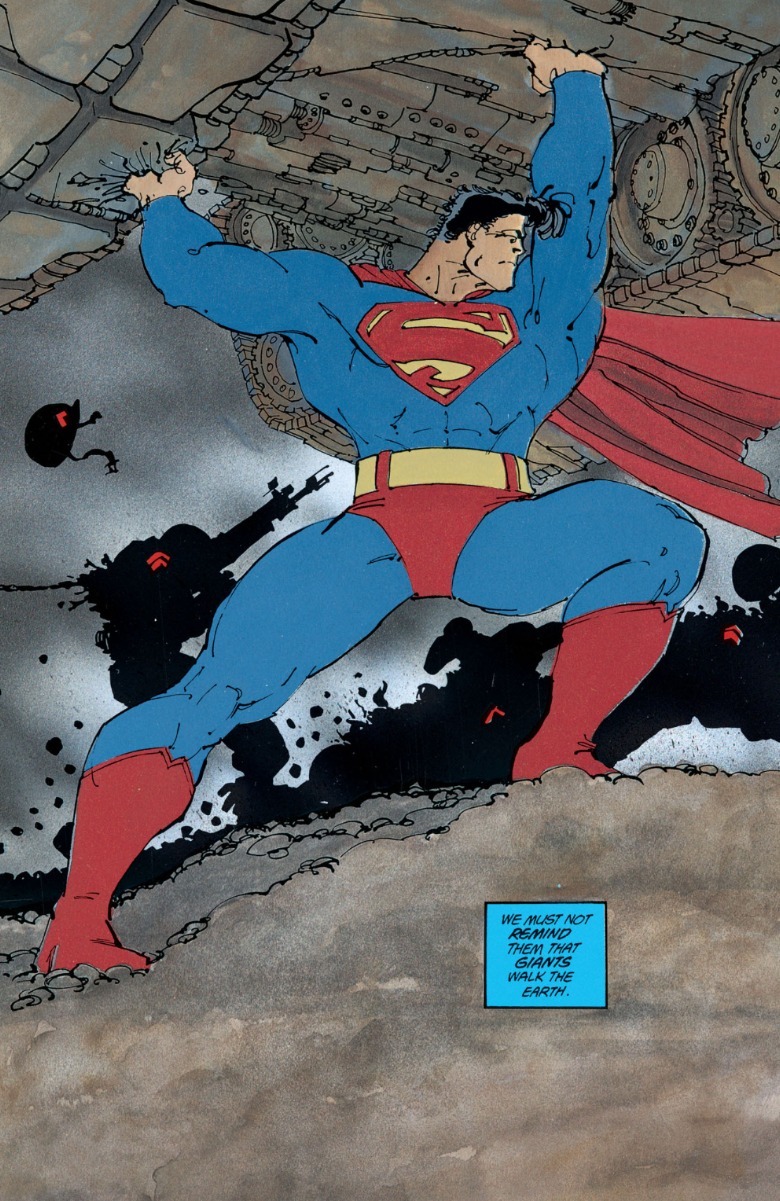James Gunn's Superman Is Inspired By Man Of Steel (But Not The One You Think)
We may receive a commission on purchases made from links.
Spoilers for "Superman" follow.
With James Gunn's "Superman," Warner Bros. is beginning a movie series based on DC Comics and is starting with the original superhero. Sounds familiar, right?
But Gunn's "Superman" and Zack Snyder's "Man of Steel" are as much worlds apart from each other as Earth and Krypton are. Where Snyder's film was downbeat and pretentious, Gunn's is happily corny, brimming with mile-a-minute exuberance. This is the type of movie where a kaiju rampage is just another day in Metropolis. Yet while he exists in a much zanier world, David Corenswet's Clark Kent is a much more human character than Henry Cavill's "realistic" Superman ever was.
This Clark is not a silent, scowling god who carries expectations like a burden; he's a goodhearted guy just trying to do the right thing. Clark's humanity, flaws included, is his strength, and his journey across the film is him recognizing that. At the beginning of the movie, Clark does what he does because of a half-garbled message left to him by his Kryptonian birth parents, Jor-El (Bradley Cooper) and Lara (Angela Sarafyan). Clark thinks they wanted their son to save Earth... but then Lex Luthor (Nicholas Hoult) decodes the message in full, revealing that "save" meant "conquer."
Clark's world and self-perception are understandably shattered. But no-one has to be what their parents wanted them to be. Kal-El came from Krypton, but Clark Kent is who he's spent all his life being. He's not an alien visitor consciously pretending to be a human, he is one of us. In the last scene of the movie, Superman is back in the Fortress of Solitude, reliving memories of his parents to remind him of why he chooses to do good. Not his birth parents any more, no, but his adoptive parents — Kansas farmers Jonathan (Pruitt Taylor Vince) and Martha Kent (Neva Howell).
Gunn and his cast have consistently pointed to Grant Morrison and Frank Quitely's 2005 comic "All-Star Superman" as a big influence on their movie. But watching the picture, Gunn's Superman — and how he chooses his adopted human heritage over his Kryptonian birthright — feels indebted to another Superman writer/artist: John Byrne, who rebooted Superman comics in 1986 with a series titled "The Man of Steel."
John Byrne's Man of Steel changed who Superman really is forever
In the 1980s, John Byrne was a superstar comic artist thanks to his work at Marvel Comics, particularly on "X-Men" (Byrne had the initial idea for the famous "Days of Future Past" story) and his writer-artist run on "Fantastic Four." Byrne's Marvel experience is relevant, because when he reinvented Superman, he brought him down to Earth where Marvel superheroes live.
Before Byrne, Superman was who Superman really was. Everything about Clark Kent, from his meek and clumsy demeanor to his journalism job at the Daily Planet, was a disguise. You can see that in the 1978 "Superman" movie, where Superman (Christopher Reeve) spends years training at the Fortress of Solitude with the Jor-El AI (Marlon Brando). He only becomes Clark Kent, the mild-mannered reporter, as a cover when it's time to fulfill his destiny. In Alan Moore and Curt Swan's "Whatever Happened To The Man of Tomorrow?", Clark Kent is exposed as Superman on live TV. Superman abandons his other half entirely, because Clark Kent was only useful as a mask.
In "The Man of Steel" and most Superman stories told since, it's the other way around. Clark Kent is the real persona, and Superman is the mask he wears to use his gifts. Part of that is Clark dismissing his Kryptonian heritage ... because he grows up not knowing about it.
"The Man of Steel" issue #6 features Clark going home to Smallville to visit his parents. His childhood spaceship, and a hologram of Jor-El, activates and fills Clark's mind with images and memories of Krypton. Clark struggles with this, but only briefly, and ultimately decides his new knowledge of Krypton is "meaningless" next to the life he does have. The very last page of "The Man of Steel" is a single panel page of Superman, in all his glory, affirming that Earth is his home.
Gunn completed the first draft of "Superman" in April 2023... and that March, he tweeted he had been "rereading all of John Byrne's 'Superman' run." You can see that from how Gunn reuses many of Byrne's Superman innovations: keeping Pa Kent alive in the present day when Clark is Superman; turning Lex Luthor into a corporate titan jealous of how Superman's power dwarfs his own; and Clark's arc of learning the truth about Krypton but deciding it doesn't matter compared to the man he was raised to be and is.
But is Byrne's Superman the one to be bringing onto modern silver screens? His run has, for many critics and fans, grown stale as the years have gone on.
Superman and the American way
James Gunn has embraced the description of Superman as an immigrant character, and his movie comes with a built-in rebuttal to the ongoing backlash to that identity. But the movie's answer comes with similar themes as Byrne's Superman: assimilation is the best path an immigrant can take. (Gunn's take adds the extra muddiness of Clark actually being sent as the alien invader Lex thinks Superman is.)
In a 2005 forum post, Byrne explained how he (born in England, raised in Canada, lives in America) drew on his own immigrant experience to write Clark's: "I don't ever — ever — feel like a 'displaced Englishman.' [...] Clark grew up as human, thinks as a human, reacts as a human. He lives and loves as a human. And that is what really defines him."
Byrne's words are telling — not just because it doesn't hit him how white guys like he and Clark can easily adapt, but because he implicitly equates Clark being an Earthling with him also being an American. Such immigrant patriotism is all over Byrne's "Superman" run, and a reason it's become controversial is that many feel it made Superman into a more conservative character.
In 1986, Byrne wasn't the only comic artist reinventing Superman. In Frank Miller's "The Dark Knight Returns," Superman is a foil for the outlaw Batman; he's cowed by the government, subservient to Ronald Reagan, and a military asset fighting in the Cold War. Miller's depiction of Superman is a critique of American exceptionalism and imperialism. Many to this day think Miller "hates" Superman because he used a character who fights for "the American Way" to make that critique. For Miller, Batman is the Übermensch, not Superman. In defeating Superman, Batman overcomes a corrupted American ideal led astray by warmongers, con men, and apathy.
Byrne had the same idea as Miller: use Superman to embody Reagan's America. (Batman even appears in "The Man of Steel" issue #3, which shows the two heroes in conflict as they had been in "Dark Knight.") Only for Byrne, that was a good thing! His Superman is one who smiles and preaches "Morning in America" without considering the ugliness underneath.
Gunn's "Superman" thankfully doesn't keep its head in the clouds. A pivotal plot point in the movie is Superman stopping U.S. ally Boravia from invading its neighbor, Jarhanpur. His only reasoning is that "people [would] die" if he didn't. Compare that to Miller's Superman leading the U.S. military in tearing through the island nation of Corto Maltese.
Superman may stand for "the American Way," but the best Superman stories understand how far the actual country is from that ideal.
"Superman" is playing in theaters.
